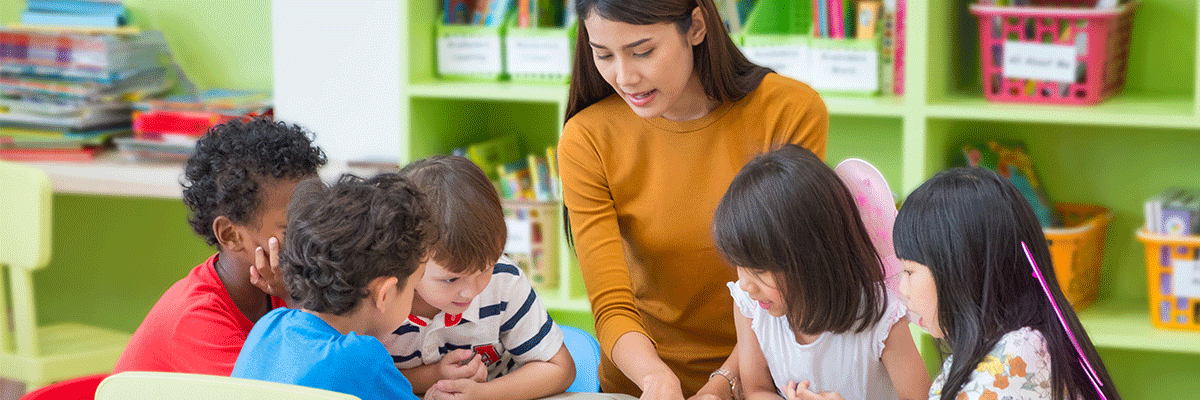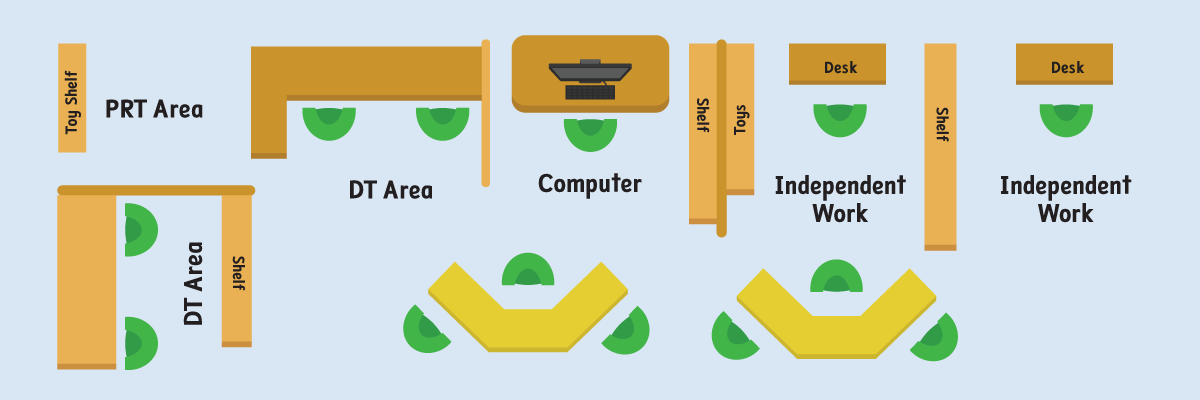July Newsletter | Top Tips for a Successful Classroom Setup

Successful Classroom Setup for Special Ed
Lea este artículo en español aquí.
Each new school year holds such abundant possibility: skills to teach and learn, friendships to form, stories to unfold. The learning environment has the quiet power to meaningfully shape these possibilities, which is why classroom planning, setup, and organization is so important. Thoughtful arrangement of work stations, furniture, visual supports, materials, and schedules can have an enormous impact on students’ success. This month we offer some of our favorite suggestions to be sure your classroom is ready to welcome students!

Map It Out
Designing a classroom space from scratch can be an overwhelming task, so we’re here to help. Our maps for early childhood (English | Español), primary (English | Español), and secondary (English | Español) classrooms include sample layouts and strategies for making the most effective use of space. Flexibility matters too, and every classroom looks a little different—that’s why we’ve made checklists with our suggestions for primary (English | Español) and secondary (English | Español) classrooms. As you create multiple areas for activities including independent work, small group, and discrete trial, be creative and have fun outfitting them for your students’ needs. Be sure to check out our social media to see how more teachers are setting up their STAR and Links classrooms!
Ahead of Schedule
Students’ daily schedules are crucial, and it’s also important to think about where staff fit into the equation—especially as changes can happen multiple times per hour. The E-Scheduler system helps you develop schedules that support students and staff across the day and through a wide variety of activities and locations. Get started with sample elementary and secondary schedules, check out customizable templates, and create your own unique schedules from scratch. The E-Scheduler even includes links to supporting materials and visuals to make sure the needs of your students and staff are met throughout their day.
IEP Alignment
Each student’s Individualized Education Program (IEP) is an invaluable window into their world, particularly as students begin a new school year in a new classroom. In addition to carefully reviewing your students’ existing IEPs, it’s important that teaching materials are aligned with each IEP’s goals and objectives. Use the STAR (English | Español) and Links (English | Español) alignment tools to make sure that curricula and your students’ IEP goals are synchronized.
Home Communication
Reach out to parents and caregivers as soon as possible to foster a culture of communication and collaboration between school and home. Sharing our free home supports is a great way to build a partnership with caregivers. For example, providing home support tools like our Conversation Starters and Response Cards (English | Español) helps encourage parents and caregivers to incorporate school-ready social skill practice both at home and in the community. Our home support tools can help bridge the gap between home and school instruction, reinforcing skills consistently, and offering students clear and comprehensive support across both settings.
